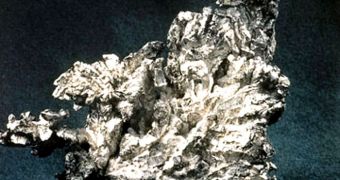In a new scientific study, sponsored by the US National Science Foundation (NSF), researchers have determined that at least some of the key chemical elements that allow for life to exist on our planet were included in the early building blocks of Earth. The scientists say that the planet began forming about 4.568 billion years ago, and add that these conclusions are based on analyses of the isotopic composition of silver found both in meteorites and the oldest rocks on Earth. Tiny variations in this make-up reveal clues as to how Earth began forming all those eons ago. Details of the investigation appear in the latest issue of the esteemed publication Science.
The research indicates that water and a number of other volatile substances were already present in the materials that formed our planet. This means that at least some proportion of Earth's atmosphere and hydrosphere may be terrestrial. Over the past few years, more and more scientists have been proposing that these two layers are actually of extraterrestrial origins, which means that the chemicals making them up were brought here on comets and asteroids.
“These results have significant implications for our understanding of the processes that accompanied accretion and formation of the proto-Earth, and the means by which volatile-rich materials like water were acquired. Water may have been present since very early in the history of our planet,” explains the NSF Division of Earth Sciences program director, Stephen Harlan. “A big question in the formation of the Earth is when this depletion [of volatile chemicals] occurred. That's where silver isotopes can really help,” adds Carnegie Institution for Science (CIS) expert Richard Carlson, who was also a coauthor of the new Science study.
Like all other inner solar system planets, Earth has very little hydrogen, carbon, and nitrogen (volatile elements), as well as reduced amounts of silver (a moderately-volatile element). “We found that the silver isotope ratios in mantle rocks from the Earth exactly matched those in primitive meteorites. But these meteorites have compositions that are very volatile-rich, unlike the Earth, which is volatile-depleted,” Carlson says. This finding has a major implication, and namely the fact that our planet's core formed about 5 to 10 million years after the solar system developed. This is considerably earlier than what hafnium-tungsten dating revealed, experts say.

 14 DAY TRIAL //
14 DAY TRIAL //